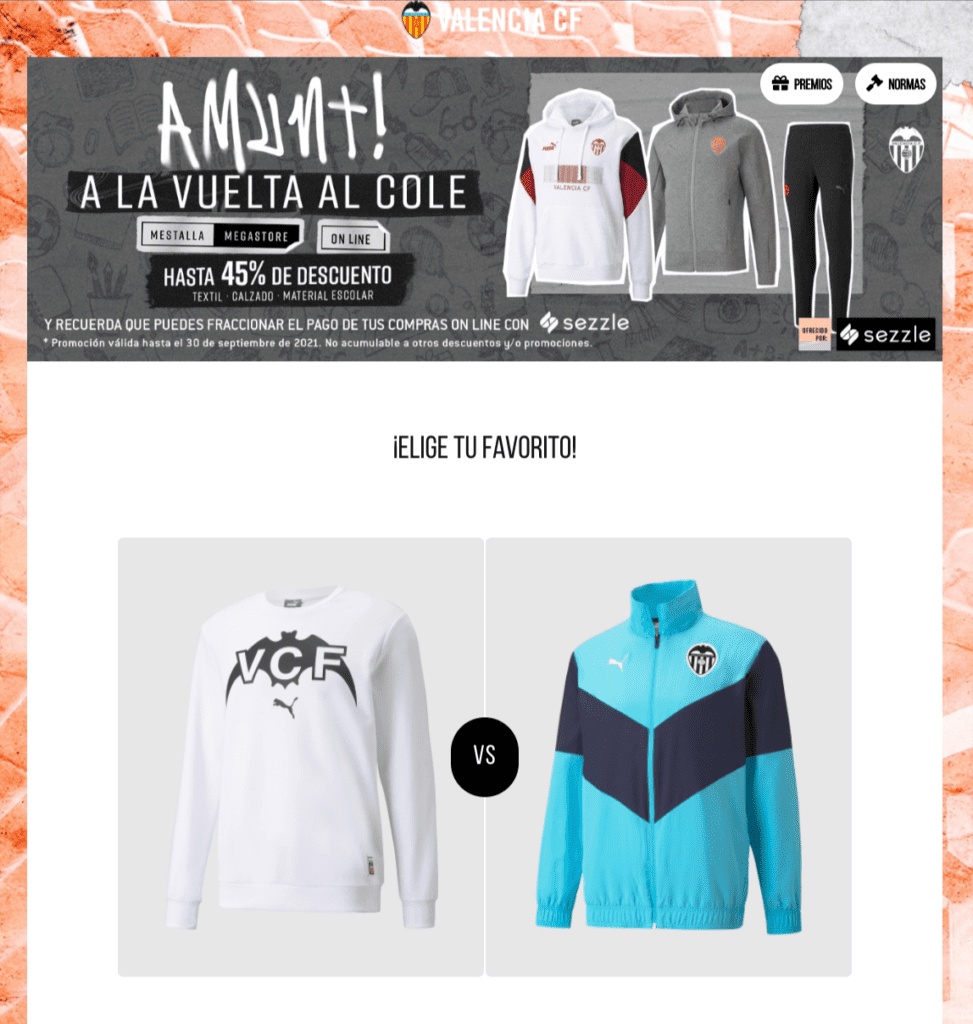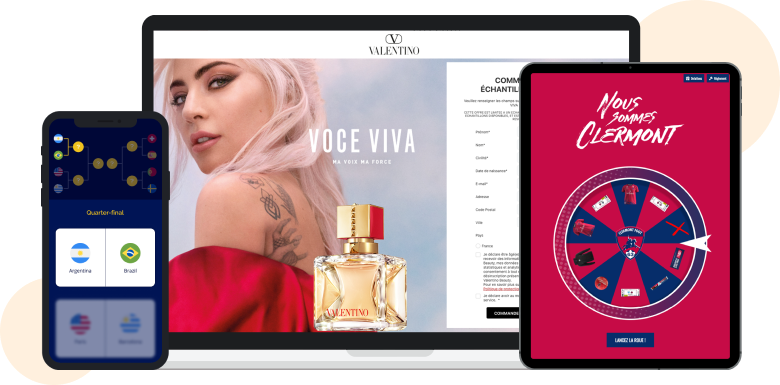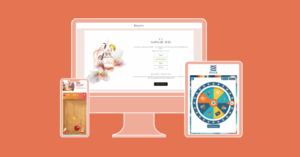What is first-party data, how to collect it, and real examples of its benefits for businesses
In this article, we explore first-party data and its essential role in modern digital marketing, covering key topics such as:
- First-party data and other common data types in digital marketing
- The value of first-party data in modern digital marketing
- How to collect first-party data and leverage it to meet marketing objectives
- Examples of how modern businesses collect and leverage first-party data
First-party data, zero-party data, third-party data…, what’s with all these trending marketing terms? Why are they such hot concepts in the current digital landscape? And, what is their value to marketers? 🤔
In this article, we delve deep into the concept of first-party data, examining why it has become so valuable in the digital marketing world. We also explore other common types of data, such as zero-party and third-party data, and examine real-world examples of how businesses collect first-party data and utilise it to achieve their marketing objectives.
What is first-party data?
First-party data is information that an organisation collects directly from its audience, typically provided voluntarily and with explicit consent. Because it is collected first-hand from individuals, this data is often highly relevant, accurate, and reliable. It enables organisations to personalise interactions with their audiences, enhance user experiences, and deliver more adequate products and services.
Common examples of first-party data include:
- Customer contact details, such as name, email address, or phone number
- App or website activity, including pages viewed and time spent on them
- Transaction history and purchase behaviour in online shops
- Demographic information submitted during account creation
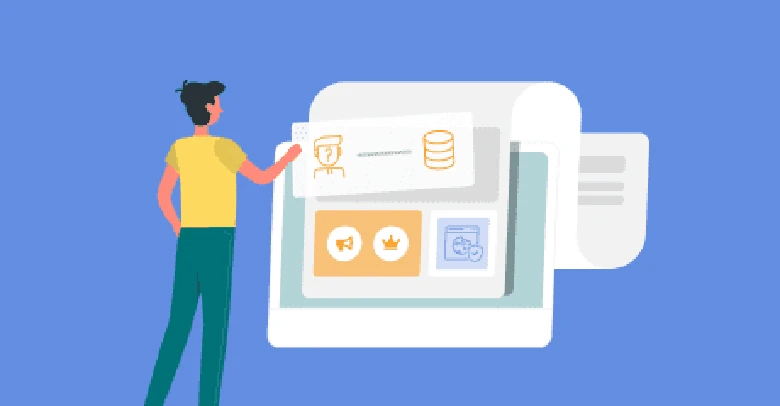
What are the different types of first-party data?
Generally, first-party data is classified into two types: declarative and behavioural data.
🗣️ Declarative data is personal information from the individuals in an audience, including a person’s first name, last name, email address, country of residence, etc. This is data that a user can provide through a form or a series of questions in an interactive marketing campaign.
💻 Behavioural data includes insights about what individuals do as they navigate through websites, apps, and other digital channels. This data can be collected by tracking user behaviour using pixels or cookies, with Google Analytics being one of the most common tools for analysis.
What are other common types of data?
As access to audience data becomes increasingly vital for business success, various types of data have become ubiquitous in the digital marketing landscape. Let’s now explore zero-party data and third-party data, two terms that, although related to first-party data, are distinct from each other.
What is zero-party data?
Zero-party data is information about an individual that is hard to infer from their behaviour unless they share it voluntarily and proactively.
The dividing line between first-party data and zero-party data is often quite blurry, as both types of data are usually collected together, even if businesses later use them for different purposes.
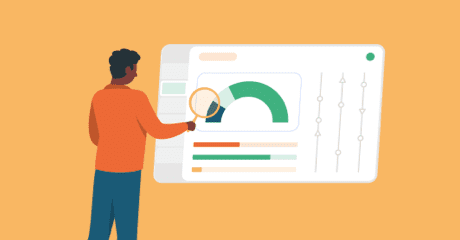
While first-party data is often required, such as when making a purchase, zero-party data is optional information that consumers willingly provide to enhance their experience with a product or service. Let’s illustrate this difference with an example where a person books a hotel room:
When booking a hotel room online, users are asked to share personal information, such as their name, email address, and date of birth. This information is generally collected through a form and represents a user’s first-party data, the minimum information required for them to make a purchase.
However, the hotel may also request additional information about users’ interests, lifestyle, or preferences (such as whether they travel for business or leisure, whether they have dietary requirements or a pet, etc.). This information represents a user’s zero-party data, which is not mandatory to provide to make a purchase, but users still offer it to enhance their own experience.
Curious to find out more about zero-party data and how to collect it to understand your audience’s preferences and interests? Find out what zero-party data can do for you in the article below! ⬇️
How Purina collects and uses zero-party data
The pet food and care brand Purina often uses interactive marketing campaigns and gamification to collect first- and zero-party data from its consumers.
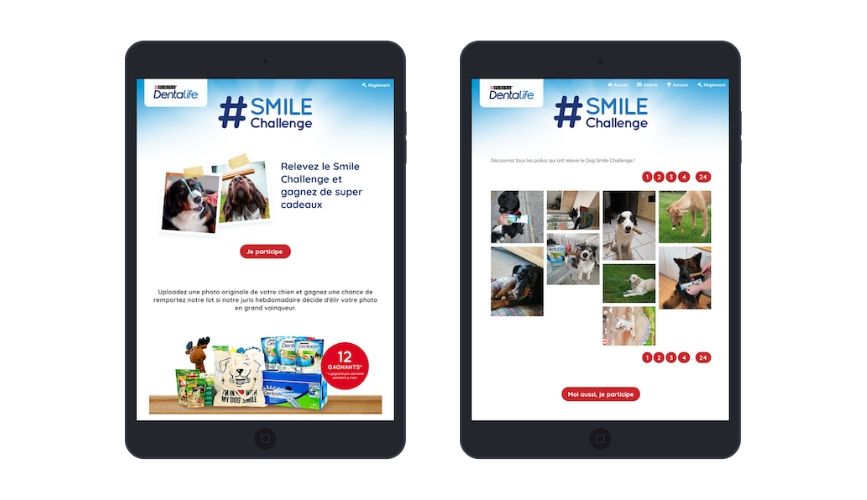
On one occasion, the brand launched a 12-week-long interactive marketing campaign with two objectives:
- Promoting a new product (Purina Dentalife)
- Collecting zero-party data from individual consumers
This campaign was a photo contest where dog owners could participate by posting a photo of their dog and answering a few questions in a form, including information about their dog, as well as opt-in checkboxes to obtain the participant’s consent to receive future communications from Purina.
In these types of contests, exciting prizes and giveaways are typically available for the taking. These entice participants to provide their information in exchange for the possibility of winning a prize, while knowing that their favourite brand is using their data to better understand them.
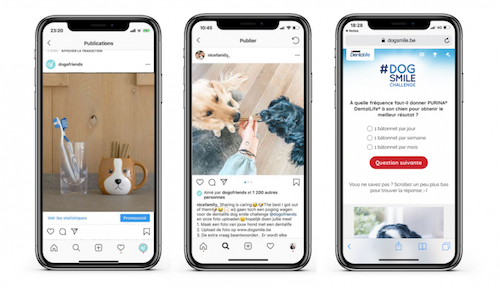
In return, and by collecting zero-party data about participants (such as a person’s dog’s breed or their dietary interests), Purina can personalise communications for each dog owner, sharing offers that are more relevant to individual preferences.
💡 By simply including each participant’s dog’s name in email communications, Purina found that their email open rate increased by 10%.
What is third-party data?
Let’s start with HubSpot’s definition of third-party data!
[Third-party data is] “any data that’s collected by a business or other entity that doesn’t have a direct link to the visitor or customer”.
Third-party data can be understood as aggregated, segmented, and anonymised data that is collected by an organisation and sold to a different one that will use it for specific purposes.
It is often used for advertising and targeting purposes; marketers use it to expand the reach of their messaging and enlarge their audience beyond databases they populate firsthand.
Buying data collected by third parties can sound extremely useful, can’t it? However, growing public awareness and data privacy regulations, such as the GDPR, are driving a decline in the use of third-party data. As a result, businesses are shifting toward collecting data in ethical, consent-based ways. This includes first- and zero-party data, which, incidentally, are often more accurate since they’re provided voluntarily by individuals.
Why is first-party so valuable today?
The digital landscape is constantly evolving, and it has changed dramatically in the past decades. As data privacy rules become tighter, with regulations like GDPR, and the use of third-party cookies declines, first-party data has become more valuable than ever: it is reliable, compliant, and shared directly and willingly by users.
Are third-party cookies disappearing?
Third-party cookies are tiny bits of code placed in a user’s browser by a website other than the one they are visiting. These cookies enable advertisers and other data platforms to monitor user behaviour across multiple websites, making them one of the key tools for collecting third-party data. Third-party cookies allow businesses to access and use user data even without direct contact with the users to whom it belongs.
In 2020, Google announced the phase-out of third-party cookies from its Chrome browser. This announcement left the digital marketing world gasping, as businesses would lose access to a free flow of user data to use or even sell to third parties.
Despite this initial announcement, Google decided not to phase out third-party cookies. However, browsers are now required to give users clear options to reject cookie tracking, which continues to make data collection difficult through the use of third-party cookies.
These changes surrounding cookies, combined with new data privacy regulations and a growing understanding and concern about data among users, have resulted in third-party data becoming an unreliable source of insights. Consequently, businesses are now focusing on developing sustainable data collection strategies, gathering data directly from their audiences through actions that involve their explicit consent.
A study by Verizon Media and IPG revealed that 87% of consumers are concerned about how their personal data is used. The message is clear: trust matters. Businesses that want to stay competitive must build it by collecting data transparently and ethically.
What is the GDPR, and how does it affect data collection?
The General Data Protection Regulation (GDPR), which has been in effect in the EU since 2018, grants individuals greater control over their personal data.
It requires businesses to obtain explicit consent from users before collecting or using their personal data, and to be transparent about how they’ll handle that data.
Before the GDPR, third-party cookies enabled businesses to track users across their sites without their knowledge. However, stricter rules came with the GDPR, which gave users the right to consent to or refuse the use of their data, as well as to request that businesses disclose the personal data they hold about them and delete it.
The surge of GDPR and similar regulations worldwide is aligned with a shift in public awareness about data privacy. Today, users are more concerned about who has access to their data and how it is used, expecting businesses to collect it in a transparent and consensual manner.
As a result, sneaky third-party data is in decline. Without proper consent from users for their data to be collected, businesses may not only face legal risk but also convey a sense of distrust and non-transparency, ultimately harming their reputation.
Why is first-party data more valuable than third-party data?
Today, data privacy, consent, and trust are paramount for users, making first-party data one of the most valuable assets a business can own. Unlike third-party data, which is often collected through indirect, non-consensual means, first-party data is gathered directly from users with their explicit consent.
Intrinsically, the way first-party data is collected makes it more accurate, relevant, and trustworthy than third–party data, which is often collected in bulk, unknowingly, and for undetermined purposes. Moreover, collecting first-party data requires businesses to connect with their audiences, helping develop a sense of trust.
To understand why first-party data stands out, here is a summary:
🤝 First-party data is collected directly from the source, making it highly accurate, qualitative and relevant to specific business objectives.
🤑 Audiences proactively share first-party data with marketers at no cost, resulting in savings when compared to purchasing third-party data.
🔑 Data privacy and protection are easy to ensure when collecting first-party data, and transparency helps businesses develop trust among their audiences.
All the above also applies to zero-party data, which is proactively provided by users and reflects their interests, feedback, preferences, and more. Together, first- and zero-party data are incredibly valuable for businesses, enabling them to create personalised experiences and communications for each audience member, ultimately driving long-term loyalty and an increase in brand engagement and revenue, all while ensuring that users feel that their privacy is respected.
What are the benefits of using first-party data in marketing?
First-party data is not just more valuable than third-party data; it is a strategic asset that has numerous benefits in modern marketing efforts:
👍 Stronger GDPR compliance
Marketers have solid control over how first-party data is collected and stored, making it easy to comply with regulations like the GDPR. By using clear forms and opt-ins with transparent disclaimers, businesses can build trust with their audience while collecting their data in a legally compliant manner.
🎯 Effective marketing targeting
First-party data enables you to better target your audience with communications that adapt to different segments, helping you nurture different groups throughout their journey with your business.
❄️ Better personalisation
First-party data cannot just be used to create segments for bulk communications. It can also add little touches of personalisation in every point of contact with each member of your audience. It’s as simple as using their name when saying hi in an email! Actions like this can lead to higher engagement, open and click rates, and conversions compared to one-size-fits-all campaigns.
With access to first-party data about your audience members, you don’t just enhance your marketing performance in the short term; you start building a long-term strategic advantage, gaining a deeper understanding of who your audience is and connecting with it in a respectful and consensual way.
How to collect first-party data?
While collecting first-party data, such as a person’s name or email address, can be straightforward when required for a transaction (e.g., purchase, registration), it can be more challenging when a business simply wants to identify unknown members of its audience or potential consumers.
Individuals won’t share information about themselves with any businesses just because they’re asked to do so. So, how can you motivate your audience to share their personal data?
🔐 Follow good privacy policy practices, providing clear and transparent information about how a user’s data will be stored and processed, to create a feeling of trust towards your organisation.
🔄 Offer a value exchange, giving your audience something in return for the data they share: an improved experience with your business, any sort of reward, or even a fun experience.
Over the past decade, interactive marketing has emerged as an effective tool for collecting first- and zero-party data. It refers to a variety of marketing actions that go beyond simply sharing information with audiences, but also encourage them to interact with brands and businesses.
Interactive marketing campaigns are a prime example of how businesses can collect first-party data, offering their audiences a value exchange. From quizzes to arcade games, interactive surveys and polls, and many more dynamics, interactive marketing campaigns provide audiences a moment of fun, a chance to win a prize, or an opportunity to interact with the brands they love, which makes them more likely to share their data and even opt in to receiving marketing communications.
How to collect first-party data with Qualifio?
Qualifio is the leading European platform for collecting first- and zero-party data. We enable marketing teams to get to know their audiences through interactive and gamified experiences, offering compelling reasons for ongoing engagement with their brands. Qualifio enables brands to:
💕 Connect and engage with their audiences through entertaining interactive content.
📊 Implement compliant strategies to collect audience data and enrich their databases.
👤 Identify unknown members of their audiences through first-party data collection.
⭐️ Increase their revenue and their audience’s loyalty, collecting zero-party data and leveraging it through personalised communications and offers.
But how does the Qualifio platform facilitate data collection for brands? The platform enables users to use interactive marketing, from standalone campaigns to reward programs, offering audiences attractive experiences and a value exchange in return for their data.
Qualifio offers a catalogue of 50+ interactive marketing formats, enabling you to quickly create data collection and engagement campaigns that you can publish across your digital channels. Curious to learn how you can reach your marketing objectives through our formats?
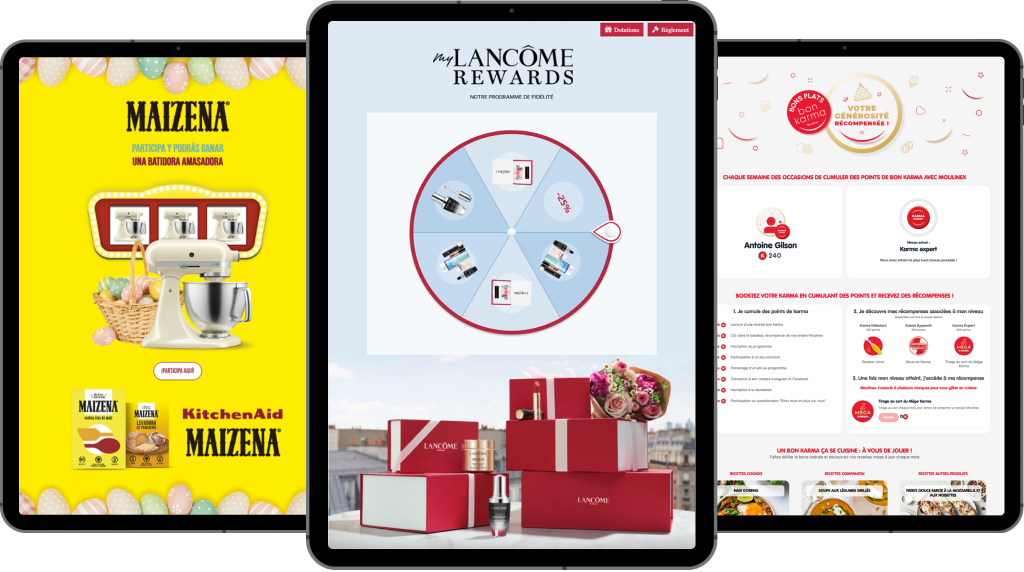
Interactive marketing campaigns created with Qualifio formats invite your audience members to interact with your brand. From a moment of fun in a digital game to the chance of winning an exciting prize through a contest campaign, there are endless ways to motivate your audience to take part in your campaigns.
Once you’ve captured their attention, our powerful forms and opt-ins will enable you to collect their first-party data through a variety of fields with their consent.
Qualifio can be seamlessly integrated with all the platforms you already use, so that the data you collect is shared immediately with your CMP, marketing automation tools, and the rest of your data stack.
Over 400 brands across various industries, including FMCG, media, and sports teams, already use Qualifio to identify their audience members, engage them, and enrich data profiles through the collection of first- and zero-party data.
Discover how brands like L’Oréal, Unilever, Nestlé, Vocento, Curry’s, MediaMarkt, Valencia CF, and many more collect first-party data and reach their marketing goals with Qualifio’s interactive marketing campaigns!
What are some real examples of collecting and using first-party data?
Let’s take a closer look at different success stories and how brands use interactive marketing campaigns to collect first-party data.
Collecting first-party data in the FMCG industry
The worldwide leading cosmetics brand L’Oréal is an expert at collecting consumer data with Qualifio. They have established a global data collection strategy that ensures all of their brands are aligned in terms of data collection and use the same approach.
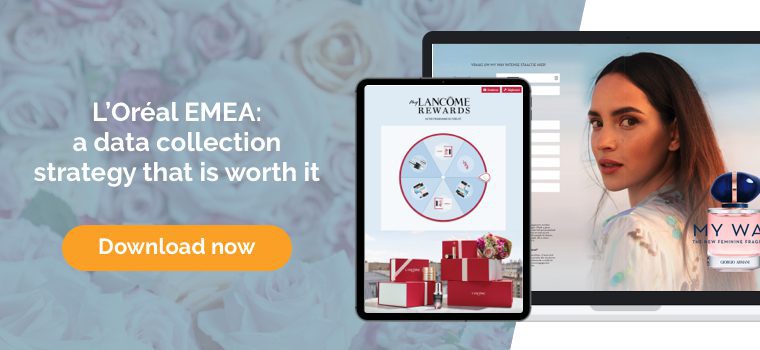
Through their ‘Database Requalification Project’, which involved updating and enriching their customer database, they leveraged interactive marketing to create over 700 campaigns and attract 5.5 million users.

With Qualifio, we can address two objectives: firstly, to increase the number of contacts we have in our database and, secondly, to work on improving the quality of these contacts.
Through these campaigns, published on their digital channels, they engage their consumers and introduce their products to prospects, who share their first-party data during their participation. Curious to find out more about L’Oréal’s data collection strategy?
Collecting first-party data in the sports industry
Valencia CF, a leading football team in the Spanish and European competitions, use Qualifio to collect first-party data from fans and potential fans by combining interactive marketing campaigns with powerful forms and opt-ins.
Their goals include identifying the members of the club’s fan base, turning them into newsletter subscribers, and fostering a more profound and lasting sense of community with loyal fans.
An example of an interactive marketing campaign used to this end is a poll in which they were asked to pick their favourite option for the team’s jersey. After making their choice, fans could fill out a form with their personal identification and opt in to receiving the team’s newsletter for a chance at winning an authentic football jersey! The campaign attracted thousands of participants, successfully collecting a total of over 2,900 new newsletter subscribers in just 15 days.

The goal of this campaign was to get as many new newsletter subscribers as possible. We knew that creating a short campaign with a new season jersey as a prize would be a great incentive.
Discover how Valencia CF uses interactive marketing campaigns to collect first-party data, identify the fans of their club, and connect with them outside of the stadium.
Collecting first-party data in the media industry
RTBF (radio-télévision belge de la Fédération Wallonie-Bruxelles) is Belgium’s francophone public broadcasting service, operating a multitude of TV channels and radio stations, as well as publishing content on their streaming platform.
They continuously use Qualifio campaigns on their different platforms and websites, where interactive quizzes attached to news and entertainment content stand out.

Our CRM department sends communications to our entire database according to a logic of interest. With Qualifio and the data collected elsewhere, we can qualify more than 3 million subscribers to whom we can offer a certain type of content or newsletters to boost their consumption of our articles
Through these campaigns, they managed to attract nearly 1 million participants over the course of a year, gathering first-party data from their readers, listeners, and viewers. This information enables the broadcaster to create a range of segments that accurately represent their audience, utilising first-party data such as age or location to refine their offerings.
Discover how RTBF use Qualifio to identify the members of their audience, enrich their database with data collected recurrently, and increase their audience’s loyalty.
Our digital world is changing at a rapid pace, shifting towards greater privacy and user control over personal data. In this scenario, where regulations like GDPR are becoming tighter and third-party data is becoming increasingly unreliable, first-party data has become one of the most valuable assets marketers can own: data that is accurate, consent-based, and compliant.
First-party data offers a wide range of benefits, including improved campaign targeting and personalisation of communications, which leads to stronger business-audience relationships. Thanks to interactive marketing, businesses can collect first-party data from their audiences in a non-intrusive and compliant manner that instils long-term trust.

